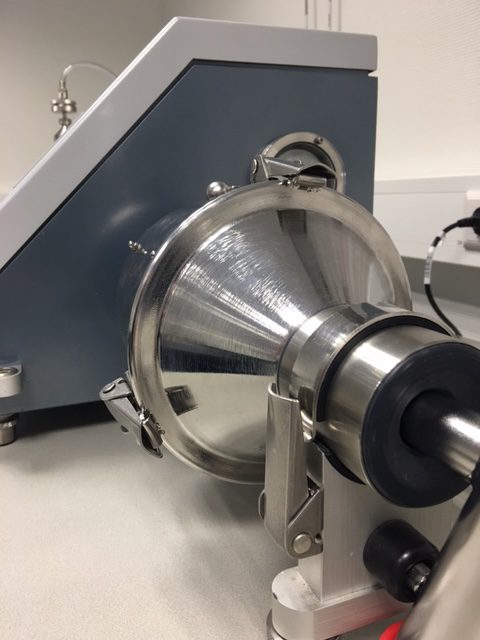Dustiness formation by handling of powders and particles is often an undesired phenomenon. Different methodologies exist to quantify the dustiness potential of products, either via the Heubach rotating drum approach (DIN 55992) or in accordance with the EN 15051 standard employing the continuous drop or rotating drum dustiness methodology.
In the rotating drum dust meter, the sample is placed in a drum and handling and conveying is simulated by rotation of the drum. By means of a well-controlled air flow, the dust released is transferred to a sampling section where the total amount of released dust is deposited onto a filter and can be quantified (Heubach) or additional separation into an inhalable, thoracic and respirable fraction can be achieved (EN 15051). The EN 15051 rotating drum methodology also provides information on the fraction of particles with an aerodynamic diameter smaller than 10 micrometers. The dust particulates on the filter are quantified and can be used for further analyses, e.g. particle size analysis, density analysis or assay of a specific ingredient.
The Heubach instrument can be further equipped with a type I, type II, or type III supplementary. In case of the type II accessory, the method is referred to as the Stauber-Heubach dustiness potential and in case of type III an additional attrition component is included by means of stainless steel balls. This type III methodology typically induces a higher dustiness potential.
The EN 15051 standard method also includes a continuous drop methodology mimicking the emptying of a storage reservoir thereby inducing a continuous flow of product that can release airborne dust particles and in that way contribute to dustiness formation. This dustiness formation is then classified into an inhalable and respirable fraction.
Further information on dustiness potential research can be found in this dustiness potential article

- Powder Flow and Ring Shear Testing
- Unconfined powder flow testing
- Powder Caking by Uni-axial compact strength testing
- Powder stickiness measurement
- Heubach and EN 15051 dustiness analysis
- Attrition and abrasion of particles, granules and tablets
- Segregation testing of powders and solids
- EN 17199-4 Dustiness index and nano particles



